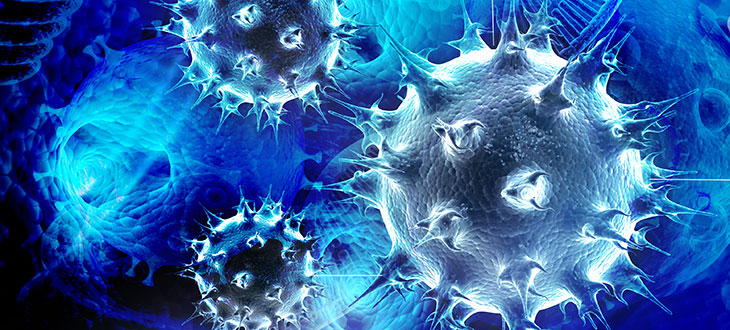
By:
Charles Q. Choi, Inside Science
(Inside Science) -- Viruses that invaded the DNA of humanity's ancestors millions of years ago may now play critical roles in the earliest stages of human development, researchers say.
The discovery sheds light on the key part that viruses may have played in human evolution, scientists added.
The early stages of embryonic development lay the foundation of what become the organs and tissues of an organism. Past research had revealed that a host of factors can influence early human development, such as the diets and environments of parents. Now researchers find that viruses incorporated into the human genome may be another major factor.
Viruses infect cells in order to hijack their machinery and make copies of themselves. One type of virus known as a retrovirus does this by weaving its own genes into the DNA of its hosts. The most infamous retrovirus is HIV, the virus that causes AIDS.
In rare instances, retroviruses infect sperm or egg cells. If those cells go on to become part of a person, his or her cells will contain retroviral DNA, which they can then pass onto their descendants. Prior studies revealed that at least 8 percent of the human genome is made up of these so-called endogenous retroviruses — the remnants of retroviral infections our ancestors had millions of years ago. These retroviral elements no longer produce active viruses.
Scientists had long thought that endogenous retroviruses might be junk DNA that did nothing within the human genome. However, recent studies found that one class of endogenous retroviruses known as human endogenous retrovirus subfamily H, or HERV-H, is surprisingly active in human embryonic stem cells, and is key to their ability to become any other kind of cell in the body. Past research suggests that HERV-H sequences are unique to humans and great apes, invading primates less than 20 million years ago.
Now researchers find that retroviral material could play key roles from the beginning of human development.
"Endogenous retroviruses might have played an important role in human evolution," said lead study author Jonathan Göke, a computational biologist at the Genome Institute of Singapore.
The possibility that the early stages of human development might depend in part on genetic material from an outside source, much less a virus, is counter-intuitive, Göke said. Still, random mutations are a very slow way to introduce lasting changes to genomes — retroviruses may have proven a fast way at introducing genetic alterations, including ones important enough to steer the course of human development, he said.
The scientists investigated more than 650,000 retroviral elements within the human genome, about 5,000 of which belong to HERV-H. They analyzed previously published data about the activity of these retroviral elements in unfertilized egg cells and human embryonic stem cells, as well as during the earliest stages of development, including the one-cell stage, known as the zygote; the two-cell, four-cell and eight-cell stages; the morula, when the embryo becomes a solid ball of cells; and the blastocyst, when the embryo becomes a hollow ball of cells.
"They did a really good job going the distance to dig through the data," said molecular biologist Didier Trono at the Federal Polytechnic School of Lausanne in Switzerland, who did not take part in this research.
The researchers discovered that roughly 1,400 of these retroviral elements were only expressed at specific times during embryonic development. They believe these are under control of the embryo's cellular machinery and therefore "potentially important in development," Göke said.
It remains uncertain what role these retroviral elements play in early human development, but it may have to do with how millions of years of evolution have made viruses masters at controlling the biology of their victims. One possibility is that embryos are using these retroviral elements as signals to switch on genetic activity within their cells. Originally, the retroviruses used these signals to activate themselves, but the cells may now have co-opted these signals to activate other parts of their genome instead, Göke said.
One challenge to determining what these retroviral elements do is that they do not exist in common lab animals such as mice, and they are not active in the human cell lines most widely used in research. Göke and his colleagues are now attempting to identify other cells these retroviral elements show activity in to study their function.
All in all, Trono noted that up to a whopping 70 percent or so of the human genome may actually come from retroviruses, much of it now too degraded to identify as such.
"These virus-like elements are increasingly now seen not as junk DNA, but as involved in regulating most aspects of human biology, from early development to the physiology of every single system, from our brain to our immune system," Trono said.
The scientists detailed their findings in the Feb. 5 issue of the journal Cell Stem Cell.
Charles Q. Choi is a freelance science writer based in New York City who has written for The New York Times, Scientific American, Wired, Science, Nature, and many other news outlets. He tweets at @cqchoi. Reprinted with permission from Inside Science, an editorially independent news product of the American Institute of Physics, a nonprofit organization dedicated to advancing, promoting and serving the physical sciences.
Image: Shutterstock




Comments